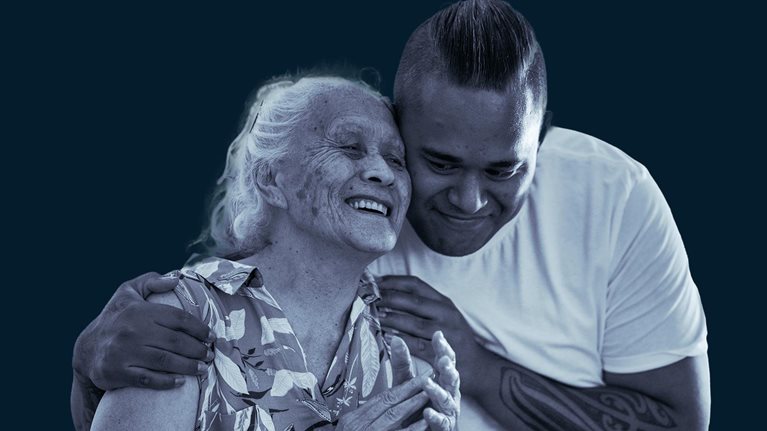The nonprofit sector attracts employees who want to make a difference in the world, who care deeply about others, and who want to create sustainable and inclusive growth. These are passionate and skilled workers who want to perform at their peak, feel as though their work is valued, and continue to serve their communities.
Yet this hasn’t been an easy task: the COVID-19 pandemic has caused additional strain on employee mental health and well-being levels, with correlated levels of higher burnout.1 For those organizations that lost staff during the Great Attrition, burnout can also be a risk for remaining employees as they shoulder more responsibilities with less institutional knowledge.2 Chronic work-related stress, coupled with inadequate time and recovery resources, can leave even the highest achiever feeling exhausted and emotionally drained, resulting in reduced job performance.3 The ripple effects of stress and burnout can go beyond employees’ physical and mental health and have knock-on effects for families, organizations, and communities.4
However, burnout can be addressed—and often prevented—if organizations set up appropriate support structures and culture. We examined this issue in Australia, building on previous research from the McKinsey Health Institute.5 Our survey of nonprofit leaders and follow-up interactive ranking activity highlighted three insights: leaders often did not recognize that stressors were predominantly physical (such as a lack of sleep) rather than environmental; that the stacking of these stresses affects their well-being; and that by reducing their personal burnout risk, they model better behavior for employees.
We follow these survey results and analysis with actions to consider to build a healthier workforce6 (for more on survey methodology, see sidebar, “Overview of interactive activity and methodology”).
Burnout is pervasive in the nonprofit sector
While many private-sector companies struggle to hire good talent in a tight labor market, more than 70 percent of nonprofits participating in McKinsey’s Organizational Health Index (OHI) agree that they can attract the best talent to their organizations (Exhibit 1).7 But the challenge lies in retention. “We hire great people but struggle to hang onto them,” according to one CEO who participated in the OHI.8

McKinsey’s 2022 global research on employee mental health and well-being, based on a survey of almost 15,000 employees, found that across 15 countries, nearly one in four employees are experiencing burnout symptoms—and that these high levels of burnout have resulted in six times more employees wanting to leave their jobs within the next three to six months.9
While burnout affects workers in all sectors around the world, nonprofit organizations appear to be among those particularly vulnerable to it. In Australia, social-sector leaders are facing immense pressure, with a substantial increase in demand for services such as mental health support, food banks, and crisis response. In fact, demand for some services has increased by 80 percent over the past five years, reflecting the severe pressure many ordinary Australians are facing.10 Given the current economic climate, including rising inflation and cost-of-living pressures, and continued COVID-19 effects, many Australians are likely to continue to depend on these services to meet basic needs.
To better understand the pressures nonprofit organizations are under, we asked 93 nonprofit leaders in Australia to characterize their current stress level. The results were telling—88 percent of respondents self-identified as “in orange” or “in red” zones—indicating that they are approaching or experiencing burnout. What is more concerning, these leaders reported having felt like this for extended periods of time—many for months on end (Exhibit 2). According to Dr. Jemma King, a research fellow at the University of Queensland School of Psychology, it is difficult to be in this state for more than eight weeks without experiencing burnout. “I see time spent in the different zones as analogous to deep-sea-diver protocols. We know when divers spend time at depth, it is a matter of science that they must spend a predetermined amount of time in a decompression chamber to avoid the bends. Similarly, if we spend time in the orange or red zone, we must spend time in the green zone to decompress, or we face the well-being equivalent of the bends.”

Consequences of extended periods of burnout include disrupted sleep, dysregulated appetite with changes in weight, compromised immunity, and memory deficits, among other effects.11
Around 11 percent of leaders said they were in a zone of creative calm—the ideal zone for productivity—or improved performance in response to stress.
When asked about the main contributors to burnout, leaders cited work culture, financial concerns, and lack of control. However, when leaders participated in an interactive ranking exercise to reveal their highest stressors, the highest-ranked factors were quite different—and speak to additional areas of focus to address burnout.
Physical factors are the highest stressors
In contrast to leaders’ self-reported assessments (highlighting work culture, financial concerns, and a lack of control) and recent organizational research, BOT results suggested that top stress factors were predominantly physical, with environmental factors ranked lower (Exhibit 3). These findings emphasize the importance of acting on both physical and environmental factors to support Australia’s social-sector leaders—and the sector—to be at their best.

Insight 1: Physical factors were rated higher than mental or environmental stressors
Poor sleep was by far the biggest stress factor for respondents. Six of the top ten stress factors were body-based. Beyond poor sleep, other factors included lack of exercise, body image, poor life routine, and no time for self-care (Exhibit 4).

Insight 2: Physical factors have a greater cumulative impact than we realize
Psychology has coined the term “allostatic load” to describe the cumulative impact that multiple different stressors have on the body. Sometimes stress factors are beyond an individual’s control, with a low likelihood of being resolved. However, the overall allostatic load can be lightened by tackling those that are more directly under an individual’s control.12 And in doing so, individuals can improve their stress responses, thus enabling more bandwidth to tackle bigger issues.
For example, poor sleep is linked to an increased risk of health problems, poor mood, reduced job performance, and lower productivity. Conversely, better sleep is linked to improved memory and cognition.13 And by creating sleep consistency (sometimes more within your control), an individual can lighten the allostatic load on the body and have greater cognitive capacity to manage issues that may not be within an individual’s control such as, for example, family demands or lack of organizational funding.
Insight 3: Leaders should take steps to reduce burnout risk, for themselves and their teams
When asked to rank these factors, survey respondents ranked environment-related stress factors lower than physical ones. As a result, the top stress factors can be at least partially addressed at an individual level, though doing so may be easier said than done—while organizational levers can encourage individuals to act.
In discussion, nonprofit leaders indicated some resistance to taking care of their own needs when others are “worse off” or need more assistance than they do. However, a McKinsey survey on employee experience found that those who engaged in self-care were able to improve their work effectiveness by 21 percent and their well-being by 45 percent.14 In fact, for every 30 minutes of slow-wave sleep, executives show a 5 to 10 percent increase in performance of mental tasks the following day.15 In short, people who take care of their own needs are more effective as leaders.
How can organizations help battle burnout?
Reducing burnout is often seen as the role of the individual. As we’ve discussed previously, paying attention to the root causes of burnout within the organization—and treating toxic workplace behavior as a skills gap to be addressed—could be more effective.16
There are several key levers organizations—and their leaders—can pull to battle burnout at a systemic level. Our emerging global research suggests eight actions that can drive improvement in mental health and well-being, including creating a supportive growth environment, enabling a sustainable work model, and eliminating toxic workplace behaviors.17 In the nonprofit context, we suggest leaders prioritize the following:
Role modeling a supportive environment and sustainable models. For instance, leaders can be more open about their work and rest patterns to show they are actively prioritizing recovery. They can also structure their meetings and interactions with colleagues in a way that demonstrates respect for colleagues’ working hours and other commitments. When leaders manage their own stress burdens efficiently, they can support their organizations far more effectively.
Building organizational awareness and incentivizing employee well-being. This could be through simple initiatives like education about burnout risks—or even incentives. For example, one nonprofit we know joins STEPtember every year, with employees organized into teams to collectively track total steps over the course of a month.
Making operational changes and championing behavioral norms to address environmental factors like the overall work culture, resourcing, and expectations around hours worked. This can include reducing “always on” work cultures, for example, by setting expectations for focused time without meeting interruptions or expectations on responsiveness outside of working hours.
Other areas could include creating norms around activity, such as walking meetings and standing desks, or providing options that lessen other stressors through part-time or hybrid models or flexible working hours.
Many nonprofit employers have the power to reduce burnout rates among the Australian social-sector workforce. Changing the patterns stemming from the pandemic is possible, whether it’s by increasing sleep consistency or creating lighter workloads. These efforts could pay off in better outcomes and ability to retain talent. When leaders “walk the walk” in reducing stress, they can create organizations that are better able to serve the country’s most vulnerable.


